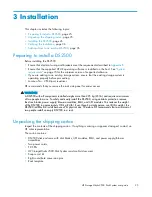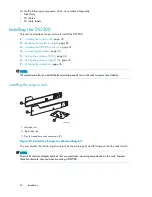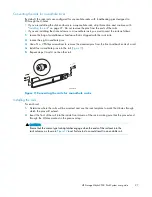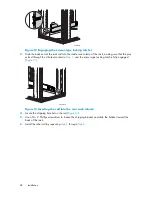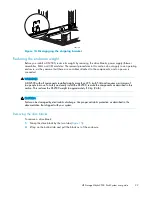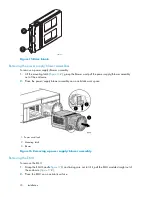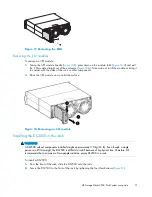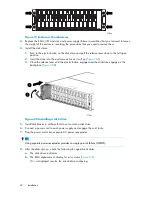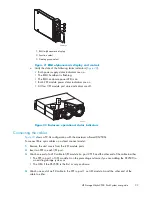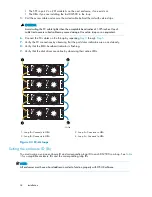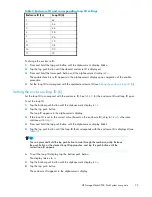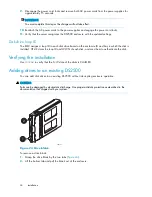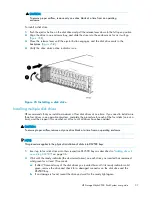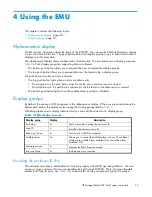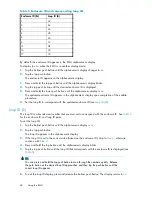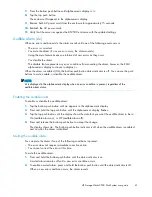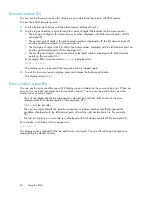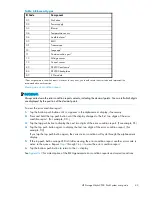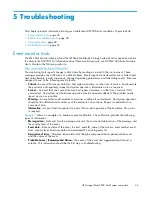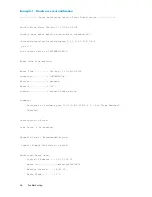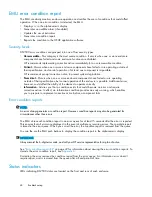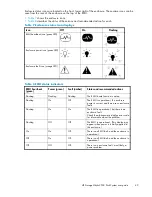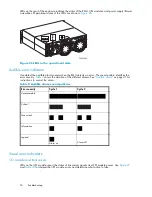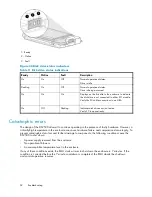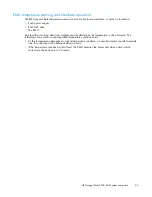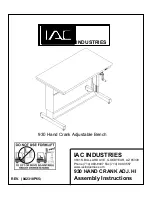
4 Using the EMU
This chapter contains the following topics:
• Alphanumeric display
, page 39
• Display groups
, page 39
Alphanumeric display
The EMU stores information about the status of the DS2500. You can use the EMU alphanumeric display
to view the status information. The push buttons below the display provide a way to select which data is
displayed and to enter data.
The alphanumeric display shows multiple levels of information. The top level shows a display group (see
Table 4
). Each display group has supporting data in sublevels.
•
The bottom push button allows you to sequentially view and select the display groups.
•
The top push button allows you to sequentially view the levels within a display group.
The push buttons double as status indicators:
•
The top push button lights when an error condition exists.
• For a single error, the push button stays lit until the error condition report is viewed.
• For multiple errors, the push button remains lit until the last error condition report is viewed.
•
The bottom push button lights when the audible alarm is muted or disabled.
Display groups
By default, the enclosure ID (En) appears in the alphanumeric display. When you press and release the
bottom push button, the display cycles among the display groups listed in
Table 4
.
A
fl
ashing alphanumeric display indicates that you can edit the contents of a display group.
Table 4 EMU display groups
Display group
Display
Description
Encoding
En
Used to encode or assign the enclosure ID.
Loop ID
Li
Identi
fi
es the enclosure loop ID.
Reporting Group
rG
Not used in a JBOD environment.
Audible alarm
Au
Allows you to control the audible alarm or horn. The sublevel
displays are audible alarm enabled (On) or audible alarm
disabled (OF).
Firmware revision
Fr
Displays the EMU
fi
rmware version.
Error condition
Er
Indicates an error condition.
Encoding the enclosure ID (En)
All enclosures must have a hard address to function properly with HP-UX operating software. You must
assign a unique enclosure ID and corresponding loop ID to each DS2500. There are nine allowable
enclosure ID/loop ID pairs. See
Table 5
for enclosure IDs and the corresponding loop ID numbers.
HP StorageWorks 2500 Disk System user guide
39
Summary of Contents for StorageWorks 2500
Page 1: ...HP StorageWorks 2500 Disk System user guide Part number 5697 6800 Second edition June 2007 ...
Page 8: ...8 ...
Page 12: ...12 About this guide ...
Page 44: ...44 Using the EMU ...
Page 54: ...54 Troubleshooting ...
Page 64: ...Figure 35 Replacing a disk drive 64 Customer self repair ...
Page 68: ...68 Specifications ...
Page 78: ...78 Regulatory notices ...

